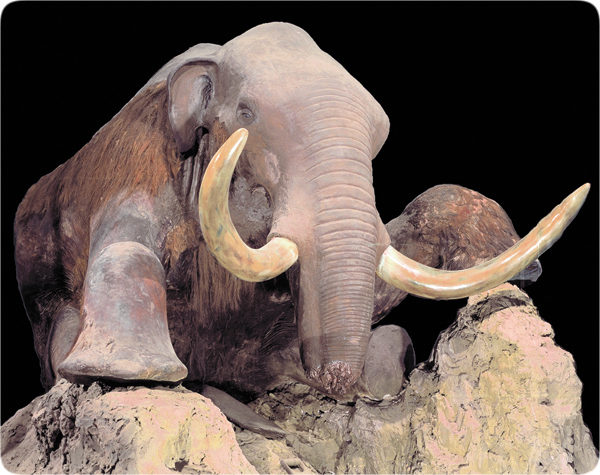The team at Harvard University believes the hardy animals could one day be released in the vast tundra and boreal stretches of North America and Eurasia. They plan to publish their first paper on the subject in the coming months, The Telegraph reported.
Scientists fear that the absence of large mammals pressing down and scraping back thick layers of winter snow in the region prevents the cold from penetrating the soil. Combined with warmer summers, the Arctic permafrost is melting. As a result, the frozen soil, packed with leaves and other organic materials that haven't decayed, will become exposed, releasing carbon into the atmosphere in the form of the greenhouse gasses carbon dioxide and methane.
This threat is widely known as the "methane timebomb," which would create levels of carbon equivalent to burning all of the world's forests two-and-a-half times over.
Comment: Because mammoths aren't scraping at the ground the cold won't penetrate? What?? Some mammoths were found with vegetation in their mouths which show that they lived in temperate climates: Of Flash Frozen Mammoths and Cosmic Catastrophes
And, the Arctic is becoming cooler, whereas areas underground/undersea have really been shown to be getting warmer. So any warming is coming from below and therefore has nothing to do with their debunked theories.
As part of a research project world-renowned Harvard geneticist George Church has led for over a decade, the team has taken 44 mammoth genes that became uncovered when ice melted in Siberia.
These will be spliced into the Asian elephant genome. Scientists hope the result, which is still many years away if possible at all, will be an elephant with mammoth traits, including blood adapted to the cold, long hair and thick layers of fat that will allow it to live further north.
In other parts of the world, the hybrid animal could save ecosystems threatened by the potential extinction of its close relative the Asian elephant. To prevent poachers from targeting the creature it will be edited to not grow tusks, and will also be able to stomach a wider variety of plants, Professor Church told The Telegraph.
But scientists must overcome several obstacles to achieve this goal, from creating elephant tissue cultures to successfully editing the Asian elephant's genome.
In a paper due to be published in the coming months, Professor Church's team will present a potential method for creating womb lining in which to grow the hybrid, amid fears impregnating an endangered Asian elephant would be too risky, Professor Church explained. This would first be tested on mice, and then larger mammals in the future.
As part of this research, the Professor Church's lab also hopes to synthesize in vitro a strain of herpes that affects Asian elephants, with the possibility of creating a treatment or vaccine.




Comment: It's both amazing and mortifying how an propagandised, erroneous belief can spiral into a myriad of unfounded assumptions with potentially devastating consequences: